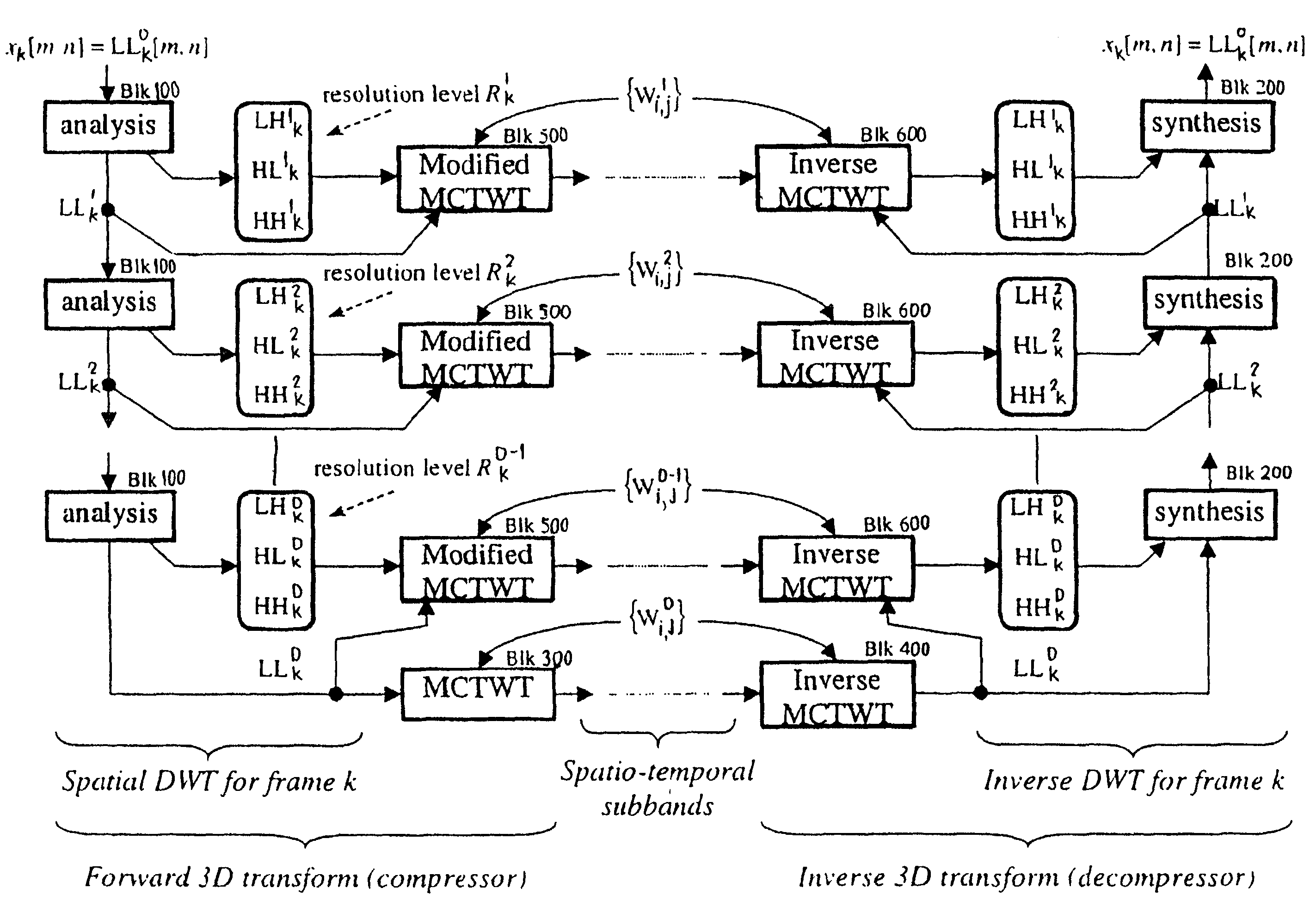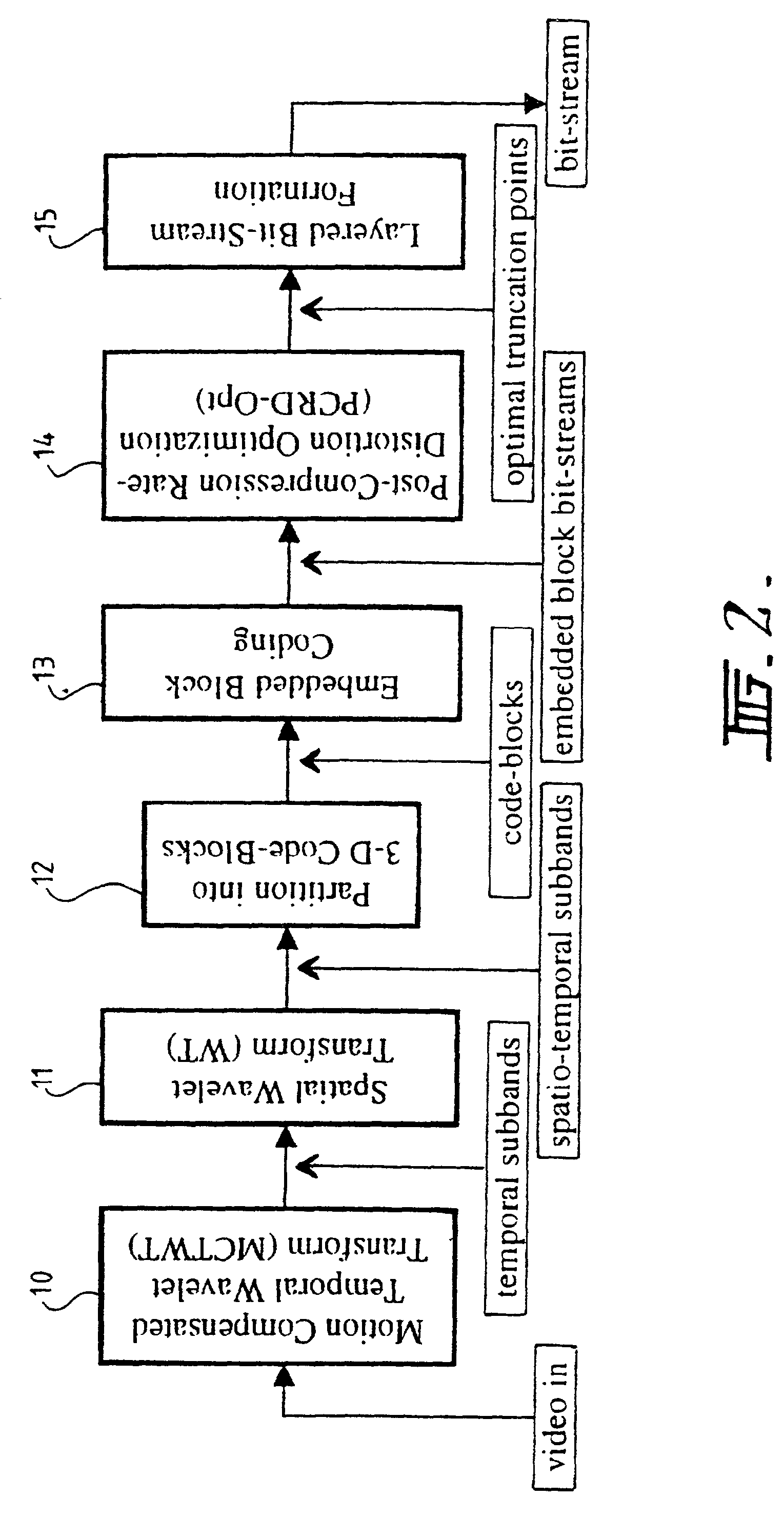Method and apparatus for scalable compression of video
a compression and video technology, applied in the field of video signal processing, can solve the problems of ineffective solutions to video browsing problems, limited compression bit-rates which are lower than the capacity of relevant network connections, and still disappointing video quality and duration, etc., and achieve the effect of efficient access
- Summary
- Abstract
- Description
- Claims
- Application Information
AI Technical Summary
Benefits of technology
Problems solved by technology
Method used
Image
Examples
Embodiment Construction
[0064]As mentioned already, the most fundamental obstacle to the development of effective scalable video compression technology is the difficulty of exploiting inter-frame redundancy within a highly scalable framework. In place of MCP, the most successful approaches in the past have focused on the use of the Haar Wavelet in the temporal domain, generating temporal low- and high-pass sub-bands corresponding to the average and difference of adjacent frames. The Wavelet transform is iterated along the low-pass channel, generating further low- and high-pass sub-bands from the low-pass channel in a recursive manner. To minimize memory requirements, this is usually continued for only two or three iterations so that the lowest frequency temporal sub-band might represent the average of 8 adjacent frames.
[0065]In order to compensate for motion, the individual frames can be pre-warped in a manner which aligns common spatial features in adjacent frames. This is the key idea in D. Taubman and A...
PUM
 Login to View More
Login to View More Abstract
Description
Claims
Application Information
 Login to View More
Login to View More - R&D
- Intellectual Property
- Life Sciences
- Materials
- Tech Scout
- Unparalleled Data Quality
- Higher Quality Content
- 60% Fewer Hallucinations
Browse by: Latest US Patents, China's latest patents, Technical Efficacy Thesaurus, Application Domain, Technology Topic, Popular Technical Reports.
© 2025 PatSnap. All rights reserved.Legal|Privacy policy|Modern Slavery Act Transparency Statement|Sitemap|About US| Contact US: help@patsnap.com



